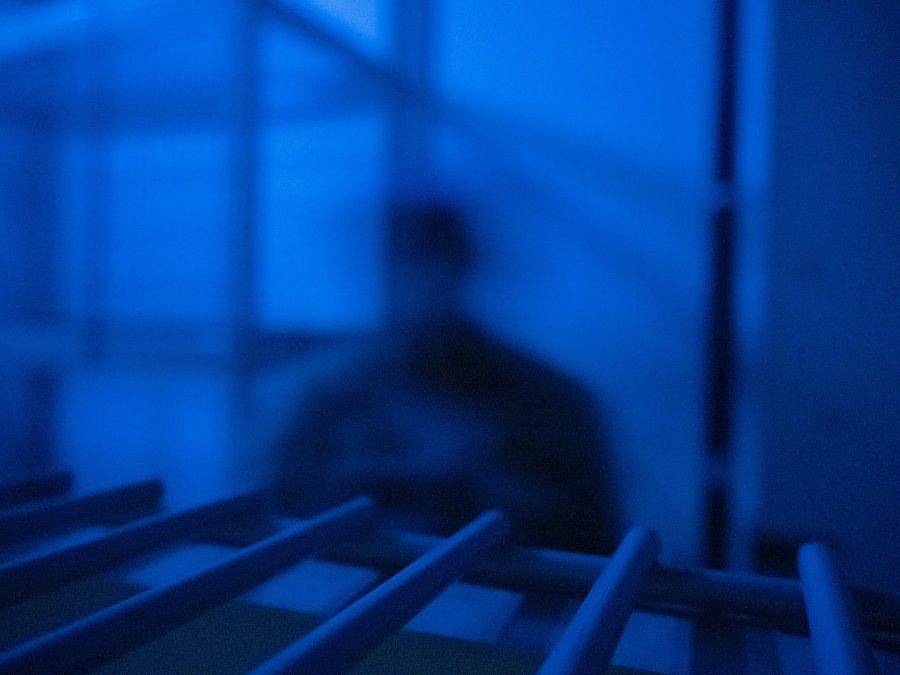Tell us a little bit about yourself and what you do.
My name’s Häsler and I’m a sculptor. I was born in Guatemala, but grew up in the high desert of Reno, NV. I currently live in Richmond, VA where I’m working on my MFA in Sculpture + Extended Media at Virginia Commonwealth University (VCU). I make reductive work that reorients the everyday to explore material, conceptual, and philosophical possibilities.
Could you describe your practice as well as a bit of your process?
I make works that consider the objects, materials, and processes embedded within our bodies, built environments, and contemporary art culture: from the water embedded in the air we breathe to the concrete we walk on to the shadows that cling at our feet. Materially, I’m drawn most often to industrial and domestic based materials. I’m interested in pushing their limits, both aesthetically and conceptually–from casting thin sheets of roofing tar to making “paintings” with drywall tape to making skin with dryer lint sheets. While my practice is primarily oriented around objects, I also utilize sound, image, light, and (unseen) performance to create works that aim to engage with spaces and the bodies that move through these spaces on a temporal plane. Some of the most prevalent strategies that have been present from the beginning of my practice are encasing and casting. But typically my work comes from observing the things around me, like the way buildings process water through their bodies, the humidity in my car, and puddles.

How did your interest in art begin and how did you get to where you are focused in now?
Like many artists, I always wanted to be an artist, but as an undocumented immigrant that was not a feasible future for me; I actually have a background in science, I have a BA in Psychology in addition to my BFA in Sculpture. You see, I was never really meant to be an artist, but life has a funny way of reorienting us in difficult times. I took my first official art class the summer before my Junior year of college and then enrolled in my first sculpture class in the Fall, and it’s been downhill since then. I’m still not entirely sure what kind of magic happened, but I found my place, I found a kind of power within the alchemy of making and it’s been something I’ve never been able to let go of–as much as I’ve wanted to or tried at times. My program was very small, but I had an incredible community of peers and professors that created an environment where I could explore slow, intense, reductive work without the fear of failing or the expectation of legibility.
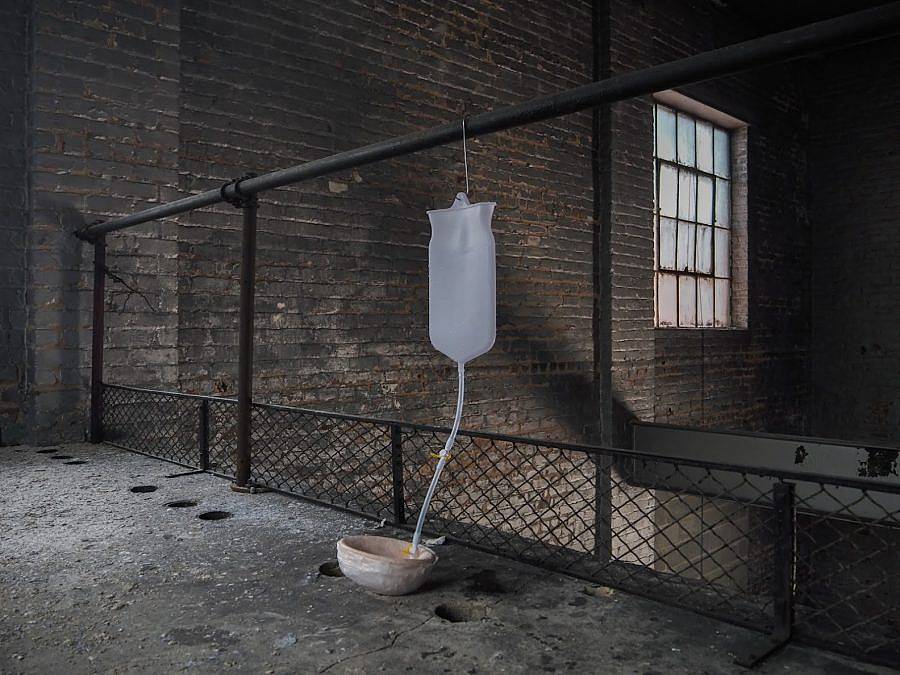
What is influencing your work right now?
I’m obsessed with black holes and quantum physics. Specifically how concepts in science can be utilized both as metaphor and theoretical framework for making. I’m drawn to the philosophical questions that begin to emerge as we approach the limits of human knowledge and understanding. Often astrophysicists describe a black hole as being more a place than an object and as an object maker I aim to make from that methodology.
Your work seems to emphasize the industrial and focuses on interacting with the space that your pieces are installed at. What do these industrial spaces and objects mean to you and how do they inform your practice?
Space is everything and no space is neutral as much as we might like to pretend it is. With that in mind, the space where a work lives is part of the work itself. When I approach a gallery space the work and gestures tend to act in a more dominating manner, trying to tap into the power dynamics built into a gallery and its social tethers and how they can relate to the viewer and their bodies. When approaching a non-traditional space it becomes more of a collaboration between the space, the work, and myself. I like to call my work site-responsive rather than site-specific in that I don’t make work for a space, but rather works meld and change from space to space, this leaves room for work to continue to develop and dislodge themselves from a stagnant existence. I try to get to know a space and how the work can draw on its specificities: its shape, the texture of its walls, an ignored corner, or even pre-existing holes, as was the case with my most recent work A GRAIN OF SALT BETWEEN TWO TONGUES which was held in a decommissioned substation in Richmond, VA. As for the objects that I work with, I feel a kinship towards them, not only in wanting to expand them beyond their immediate use or relation, but also because I’ve grown up around them, visiting the construction sites my family members worked on and at one point where I worked as well. Most often these objects and materials are everywhere yet, we never really see them let alone think about them, like traffic cone weights, garbage can lids, bike racks to objects and materials that are made invisible through their use such as joint compound, drywall tape, roofing tar to more ephemeral and ontological materials and objects like holes, water, and shadows.

How does you work challenge the way bodies interact with space? What are you trying to draw a viewers attention to when you make work responding to space?
When making I obsess over how the viewer could or will encounter a work, however, the works I make are never entirely leaned toward the viewer. From lowering the height of a gallery by installing a grid made with pink construction line that hovers above the viewer; to embedding cast joint compound into the gallery wall so as to only be visible from a certain distance; to installing works that become physically inaccessible to the viewer and can only be experienced either from a distance or from below where the viewer can only experience the gesture that the object performs; my hope is to allow the viewer to re-experience their bodies, through work that limits/disrupts or mirrors functions of their bodies as well as creating spaces that ontologically and conceptually shift away from the human and towards the non-human. In the similar way that I reorient and disorient objects and materials I hope to do the same with the viewer, or rather, create the potential for the experience to occur. In addition, I long to bring the viewers attention to the made-ness of the spaces we move through and inhabit. We rarely, if ever, think about who poured and finished the sidewalk we walk on everyday.
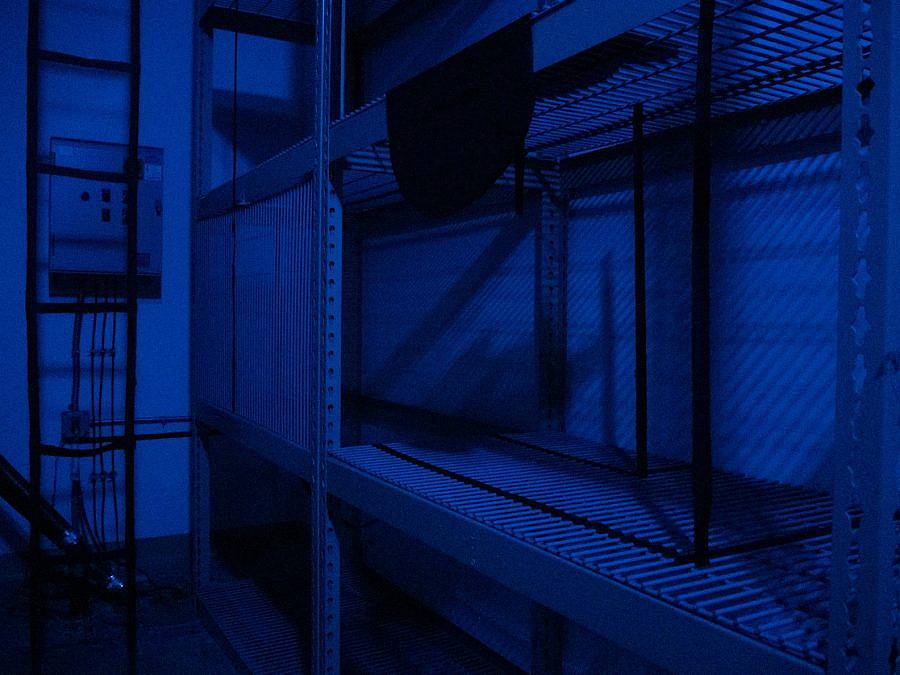
The conceptual idea of a shadow feels very prevalent within your work. How would you define a shadow? What is its importance to you?
My interest in the shadow was born out of my interest in the hole. I’m not sure if I have a specific definition for a shadow, but I’m drawn to what a shadow does and can’t do: the way it seeps into crevices and spaces, the way it’s perpetually tethered to the body of another. But where do shadows go in pure darkness? A shadow much like a hole feels like an ontological parasite whose material is recognizable on site, but difficult to physically pin down. But I also feel a certain relation to a shadow and wonder what would happen if it dislodged itself from the body which casts it? What would it do? What form would it take on? Where would it go? This is something I explored in NIGHTSHIFT where I created a space where real and false shadows could meld into each other; something the viewer could only experience through holes in the door of the janitor’s closet. I think for me, a shadow is a material, a metaphor, and an identity.
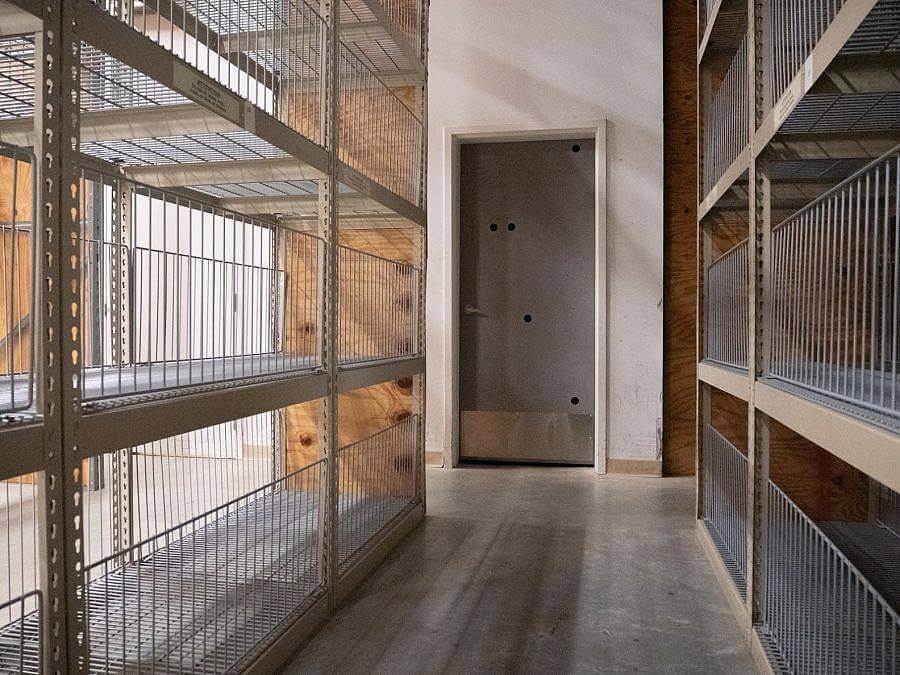
While not a conventional “material”, light seems to be a tool you utilize in many of your works. Can you talk about how you use light and why you’re drawn to working with it?
I actually came to light through shadow and through my desire to give shadows the ability or potential to explore new possibilities. I’ve been working with roofing tar for a couple years now and have discovered many of its aesthetic and conceptual properties, a new one being that its matte-ness allows it to become even darker than darkness when in a dark room with minimal to no lighting, from there I developed strategies for using light as a material, in the instance of IN OBLIVION’S LIGHT, I used light in the form of laser levels to apply controlled yet mutable elements of light in a room of “shadows”; this allowed viewers to never see the works cloaked in shadow, but rather only perceive their presence while also losing their ability to perceive themselves outside of the red line that tracked their steps. I think we often take light and lighting for granted, because it’s arguably always there. My hope is to reorient light.
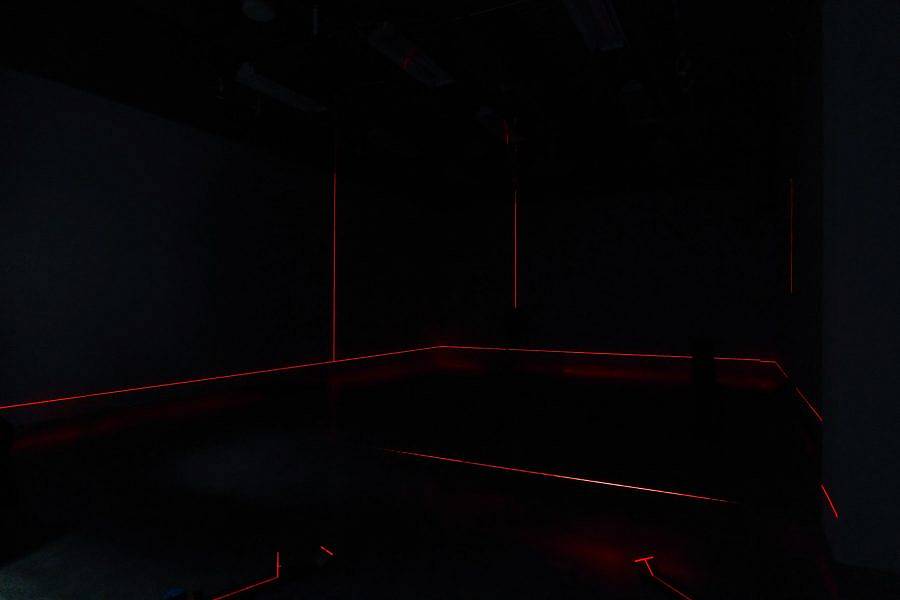
What are the main motifs in your work?
From the beginning of my practice I’ve been drawn to collating bodies of work under specific symbols. Currently the circle or the hole has been manifesting within my work. The image and form of the ladder has also recently been appearing. Outside of that, it’s always texture. For me, it’s paramount that I touch every inch of a work and as such the skin of the work is incredibly important to me. I think outside of reduction and a muted color pallet, surface is a quintessential component of my work.
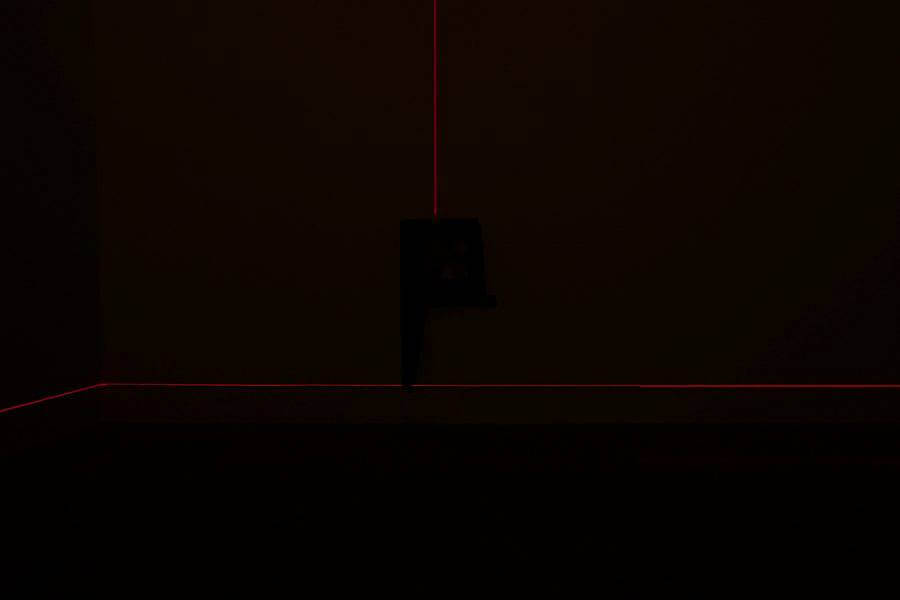
What do you collect?
I collect really bad ceramics, really good ceramics, and really good traditional tattoos. But most recently I’ve been collecting the silicone parts housed inside vapes as well as shoe heels.
Interview conducted and edited by Lily Szymanski.
